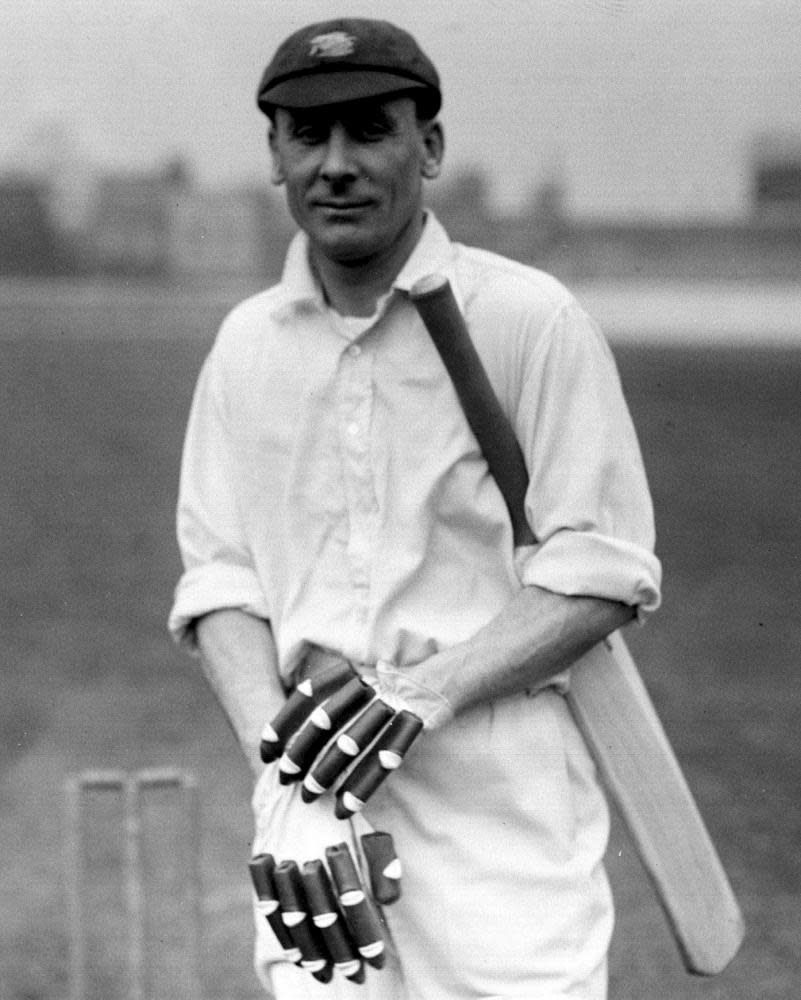The 1920-21 Ashes: typhus quarantine and unseemly barracking

A hundred years ago on Monday, England’s fifth and final Test in Australia concluded, like the previous four, in defeat, ending a tour that started badly and went rapidly downhill, a voyage of Englishmen to Australia that was dealt its first blow when a man from Malta who had recently returned from Poland boarded a boat in Italy and disembarked in Sri Lanka.
The boat was the Osterley, a steamer that had left Tilbury in London on 18 September, heading for Brisbane via Gibraltar, Toulon, Naples, Port Said, Colombo, Fremantle, Adelaide, Melbourne and Sydney, and all but one of the England party was also on board (Surrey’s Bill Hitch, a late call-up, travelled separately). Soon after leaving the ship the man died of typhus.
Related: 'You have to get ugly runs': Laxman's expert guide to batting in India
The disease, carried by fleas and other small bitey things and spread most rapidly in areas of high population density and low sanitation, raged across eastern Europe after the first world war, with Poland, Russia and parts of Austria particularly struggling. “In Russia the disease seems to be epidemic,” the former prime minister Arthur Balfour, still a member of the cabinet, reported in September 1920. “An eminent doctor who has just returned from the country says it has been swept from end to end by typhus, that scarcely a town or village has escaped, and that half the doctors engaged in combating the plague have died.”
There are obvious echoes of this in the present Covid crisis, including in Australia’s reaction to it, though of course in 1920 it was insulated both by geography and the helpful absence of commercial flights. (As it happens the period England were on the Osterley was a notable one for those as well, for it was in October 1920 that a new company called Queensland and Northern Territory Aerial Services Limited was formed to experiment for the first time with small-scale flights in Australia – very small: they had two three-seater planes and one four-seater. Over time it became less small in scale, and better known by the acronym Qantas.) Still, they were fully aware of the danger that travel into the country presented.

“The incident is a reminder of the risks that attend the improvement of our communications with the old world, reducing in practice the distance that was formerly our safeguard against an extension to our shores of the direst of its chronic diseases,” the Adelaide Advertiser wrote. “With all our precautions we have been unable to exclude the plague and more than one bad type of influenza, and our hygienic arrangements have not afforded so perfect a security that we can view without the utmost dread even the possibility of a visitation by a disease so insidious and startlingly fatal as typhus.”
Which is why England’s players, when they finally arrived in Australia, became the first group of high-profile sportspeople in the country’s history to be sent straight into quarantine, though certainly not the last – just ask Novak Djokovic.
After a welcome of sorts when they docked in Perth, with various cricketers, fans and administrators shouting their greetings from a safe distance, they were taken to Woodman’s Point, where a quarantine station had been established in 1886. It closed in 1979 but some of the buildings still stand; in 2018 one was named “possibly the most haunted house in Australia” by the Mail while journalists from the West Australian visited with a medium. “We were told the ghost of a young boy was watching us from the shower block,” they reported. “Our cameras didn’t pick up anything, but our medium told us his name was Robert.”
“The quarantine business is a nuisance,” wrote Jack Hobbs, before describing a scene that seems anything but. “We are right on the seashore, and the air is glorious. Two lengths of coconut matting have come from Perth and this afternoon we shall begin cricket practice. I tremble for the safety of the batsmen, as the ground is extremely rough. Every morning at 10 o’clock a doctor comes to take our temperature. There is a lot of leg-pulling, such as: ‘My word, old man, you do look bad! You look just the same as a chap I once knew who died of typhus.’
Related: The Spin | The Commonwealth of Cricket: sport, race and empire in powerful memoir
“Those of us who are nervous and imagine we have temperatures face that doctor with trepidation. I cannot speak too highly of the tenderness shown to us. The people of Perth have sent us tons of fruit and chocolate, and there are dozens of cards of invitation, which we cannot accept. We have just been handed a parcel of fishing lines and hooks, so we are now off to the landing jetty.”
By the time they were released England’s players were, according to their captain, JWHT Douglas – subject of a Spin of his own last month – “well and happy, though chafing under restraint”. Their incarceration may not have sounded particularly gruelling but it did significantly affect their preparation for the Test series, in which they were soundly thrashed. And England’s trouble didn’t end on the field of play.
Two of their players were doubling up as journalists, with ER Wilson, the vice-captain, representing the Express and Percy Fender writing for the Daily News. Reporting on your own matches throws up all sorts of practical and ethical issues but the real trouble came after both criticised umpiring decisions, with Wilson particularly upset by the “shameful” running out of Abe Waddington in the first Test.
This was reported on at length in Australia, which led to both players being abused by supporters, which was also criticised in the British media, which led to further abuse from supporters. “When Wilson walked out, there was an immediate outburst from the crowd on every part of the ground, and everywhere thoughts were forcibly expressed,” read one report on the final Test. “‘Liar!’ roared the spectators.”

The Express, backing their correspondent, suggested implausibly that “the explanation probably is that the attack upon Wilson masked a sense of shame to which the crowd would not confess”. After returning to England, one unnamed player said of Australians: “They are something like a football crowd, always wanting to be shouting if they get a chance. It’s difficult to get used to.”
It is fair to say the Guardian did not approve of fans shouting at players, and was certain that it wouldn’t catch on. “We have been told about ‘good-natured barracking’. Having lived many years in India, I have never seen a congenial cobra, but a good-natured barracker and a congenial cobra must be twins,” wrote our reporter. “Barracking of any sort is, and will ever be, offensive, always repugnant, never sporting, almost always provocative of retaliation, and certainly shocking bad manners, since no well-bred person has, or ever would, barrack.”
Far from being hostile, Patsy Hendren (the batsman and footballer, who was playing in attack for Brentford within a week of his return to England) insisted that the Australians “were too good to us, for they quite tired us with their attentions, with their dinners and with their excursions”, but their hospitality did not extend to the cricket pitch, or for that matter to infectious diseases.
Australia travelled for a return series that same year, now unable to rely on their own pitches, their own umpires, their own fans, or the disrupted, quarantine-curdled preparations of their opponents. They took the series 3-0, victorious in the first three Tests to set a record of winning eight successive Ashes matches which has never been equalled.
• This is an extract from the Guardian’s weekly cricket email, The Spin. To subscribe, just visit this page and follow the instructions.

 Yahoo Finance
Yahoo Finance 